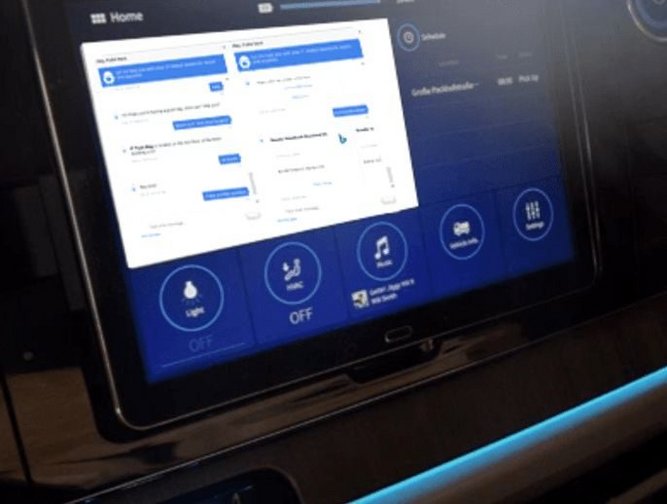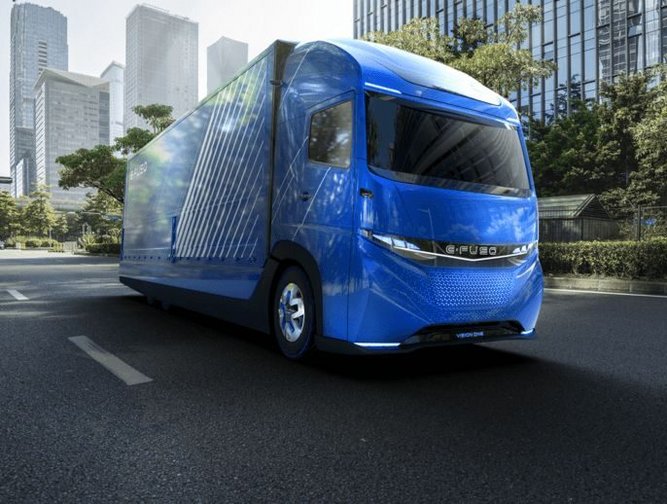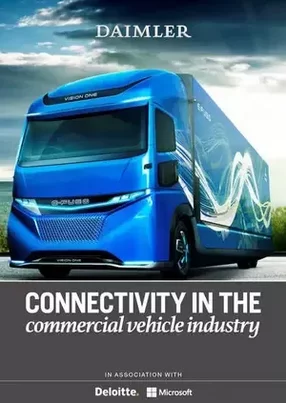Daimler Trucks Asia: Leading connectivity through its Connected X strategy
Housing an envied and world-class reputation, Daimler Trucks Asia (DTA) has cemented its presence as a leader in manufacturing and transportation. An integral subsidiary of manufacturer Daimler AG, the organisation has worked to transform its existing business model and diversify its portfolio, developing new products and services to sell to its customers in an ever-growing industry.
However, in order for this to happen, its core vision has remained clear – to drive connectivity.
“At DTA, we want to lead the commercial vehicle industry into the future and be number one in quality, innovation, customer satisfaction and places to work. We want to connect everything,” explains Chief Information Officer Lutz Beck.
“Our transformation is ongoing on an organisational level, but we are in the midst of a cultural change as well.”
Connected X
Driven by its senior leaders, DTA’s digital strategy, Connected X, has seen the organisation overhaul its outdated infrastructure and application landscape. By deconstructing its back-end and legacy systems, DTA has rebuilt its internal processes through the use of new technologies, enabling it to move into an increasingly digital world based on a new digital foundation.
“By transforming into a data-driven organisation, the key aspects will be how we work with data and how we understand the data,” observes Beck. “Integrating all data is also in accordance with our overall Daimler Truck Asia strategy.
“We defined our Connected X strategy based on three pillars – product, process, people – in a bid to drive Daimler Trucks Asia towards a data driven organisation and connect everything by fully utilising the Internet of Things (IoT),” he continues. “We needed to work on core elements such as digital products and services, data driven and modern methods and skill sets.
“On the product side we are focusing on improving new as well as existing production sites and vehicles by digital enabling them. On the process side, we work on efficiencies through automation and robotics. On the people side, we started to train, renew and scale up the team, bringing a combination of traditional IT skills and new digital skills which are required to run such complex transformations.
“There are not many companies in our industry that are doing this in such a way, so we have become a front-runner in terms of digitalisation.”
Data-driven technologies
The need to collect and enhance all data has been essential throughout DTA’s aim to enable the business units to perform data driven decision-making and innovations. The combination of Truck connectivity and analytics helped the organisation in quality management (QM) processes to unlock saving potentials and business value.
By collaborating with Microsoft and Deloitte, DTA has integrated its internal data, as well as its external data received from both its sites and connected trucks. The ability to gain real-time data has therefore enabled the development of new solutions and delivered significant cost savings across the board.
“There is nothing which we are doing which is not giving us either internal benefits or new business opportunities,” adds Beck. “I do not have cases where we do not have savings or additional revenue streams achieved by introducing new technology.”
One key example is the development of DTA’s proactive sensing analytics. Built in partnership with Deloitte, the two companies analysed a large number of QM information surrounding the health of DTA’s trucks. Through this, the companies found a number of patterns in the high volume of data received, paving the way for a solution to be developed.
Through proactive sensing, DTA is now able to detect issues in advance, reducing downtime and increasing the safety of its vehicles through predictive intelligent maintenance.
“It doesn't matter if you talk about big data, artificial intelligence, machine learning or deep learning, all these new ideas are helping us to be number one in quality, innovations and customer satisfaction while being more efficient and more cost-effective,” notes Beck.
To further solidify its position as a tech-leader in the commercial vehicles industry, Mitsubishi Fuso has also developed and launched the all-electric light-duty truck eCanter which is in series-production since last year, as well as the concept heavy-duty truck, E-FUSO Vision One. Developed from feedback received from customers, the E-FUSO brand will open doors to the development of further connected, electric-powered vehicles across DTA’s fleet, and will also work to reduce emissions whilst strengthening its position in the market.
See also:
Experimental technologies
Although the organisation has worked to invest in new technologies and extend its areas of innovation, the need to mitigate potential risks within its IT operations has never been more important. Enhancing its cybersecurity has therefore become a key focus within DTA’s digital strategy, and a team has been established to proactively manage security patterns across its manufacturing operations.
Interestingly, the organisation is also looking at other ways to transform its production capabilities through the increased use of new technologies (such as robotics) and defined the concept of the Factory of the Future based on Industry 4.0 principles.
“If I look at the production, we can use much more automation and robotics in the manufacturing space. We are on the way to connect wherever possible our robots in order to collect real-time data, and based on that take real time decisions on predictive maintenance and other topics,” explains Beck.
“Secondly, when we are looking into our office environment, there is a lot of automation and efficiency gains which are made possible by using robotics. Therefore, we are looking at how we can gain further efficiency in the office environment through the use of robotics and are looking at automating processes which today are paper-based.”
DTA is therefore undertaking increased experimental research in using robots for specific topics. For instance, it is also utilising famous Japanese robot Pepper to look at ways in which it can boost efficiencies.
Competitive edge
Through blending traditional ways of working with new ideas and technologies, DTA’s working culture and subsequent development and training of employees, has consequently undergone significant change.
“We are continuing to upscale our existing people in new technologies. This is an ongoing task which we do internally and with external support,” notes Beck.
“We also looked at the skillset in the market and employed people who had the required skill sets and brought them into the company. We have now built up skills on analytics, artificial intelligence and virtual and mixed reality. We are also taking on new people for our connectivity platform and for our connectivity for our trucks.”
It is clear that DTA will continue to disrupt the commercial vehicle industry, where it will seek to develop increasingly connected, tech-driven products and services for its customers. However, speed will remain essential in such a competitive space.
“This is a challenge, but we want to take that challenge and see how we can move forward and combine these elements with the new technologies coming in for our customers and for our organisation,” concludes Beck.
“We will need to see how we can further use technology to transform the organisation, our business model and how it will enable us to create new business services in the future.”


- Coforge: Arming Financial Firms with the Tools to InnovateDigital Transformation
- Coforge: Arming Financial Firms with the Tools to InnovateDigital Transformation
- MWC24: Harnessing AI to Modernise Telcos with Tech MahindraDigital Transformation
- Big Ass Fans' Journey Through Digital TransformationDigital Transformation

